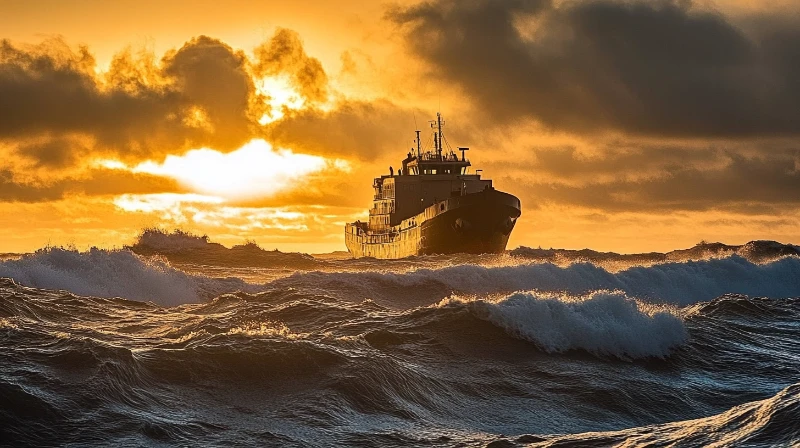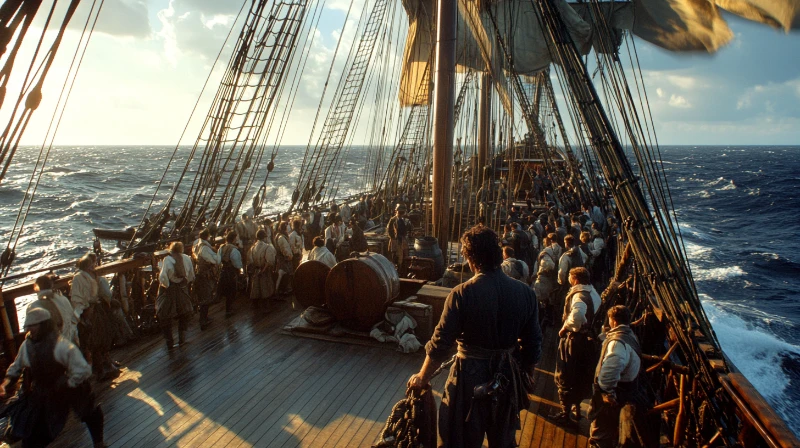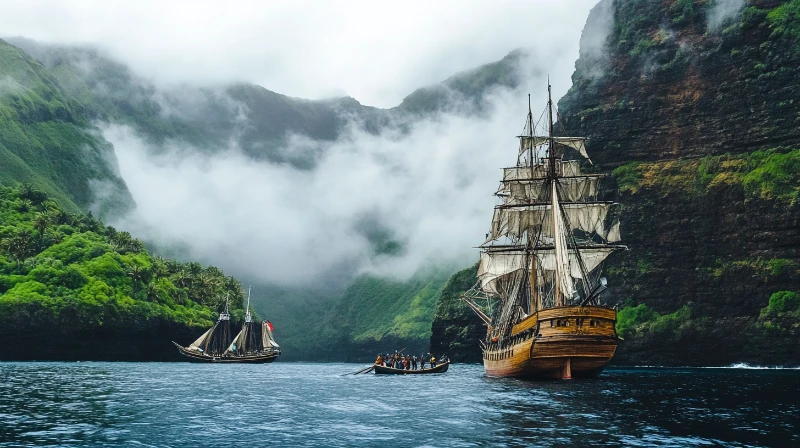There are places in the world that most people don’t even know exist. Pitcairn Island is one such place. Lost in the vast blue of the Pacific Ocean, this tiny dot on the map may be almost invisible, but its history, events, and experiences could fill an entire book. It is one of the most isolated places on Earth. Getting there is an adventure in itself, and living there is an entirely different world. However, what truly makes Pitcairn fascinating is not just its geographical isolation but also the extraordinary stories it holds.
Where is Pitcairn Island?
Pitcairn Island lies in the middle of the Pacific Ocean, hundreds of kilometers away from the nearest landmass. Situated between South America and New Zealand, this small island is located east of French Polynesia and a staggering 500 kilometers away from the closest inhabited land, Mangareva Island. If you are looking for a larger landmass, the nearest one is Tahiti—2,000 kilometers away.
The island has no airport, and the only way to reach it is by sea. But even that is not easy. To get to Pitcairn, you first need to fly to Tahiti, then find a plane ticket to Mangareva Island. However, there is only one flight per week to Mangareva. And what if you make it there? That’s when the real adventure begins! The only way to get from Mangareva to Pitcairn is by cargo ships that run just once or twice a week.

Moreover, this journey takes a full 32 hours. That means battling the waves for nearly a day and a half. Depending on weather conditions, these ships can be delayed or canceled, making a trip to Pitcairn a test of patience and an adventurous spirit.
The History of Pitcairn Island and the HMS Bounty Mutiny
One of the most fascinating aspects of Pitcairn Island is its discovery through a legendary naval mutiny. In 1787, the HMS Bounty, a ship of the British Royal Navy, set sail from England to Tahiti under the command of Captain William Bligh. Their mission was to collect breadfruit saplings from Tahiti and transport them to the Caribbean. At the time, breadfruit was a fast-growing and easy-to-cultivate food source that the British planned to use to feed enslaved people in the Caribbean.

However, the journey was far from smooth. Captain Bligh’s harsh discipline and poor leadership led to a crew rebellion. In April 1789, under the leadership of the ship’s second-in-command, Fletcher Christian, the crew mutinied. Captain Bligh and 18 loyal men were cast adrift in a small boat in the middle of the ocean. Incredibly, Bligh managed to navigate 6,700 kilometers in this tiny vessel and survived.
Meanwhile, the mutineers had become fugitives. Knowing that the British Navy would hunt them down, they sought a safe hiding place. They first returned to Tahiti, but the risk of capture was too high there. Eventually, they discovered Pitcairn Island, an almost forgotten place on maps. The British had incorrectly charted the island’s location, making it nearly impossible to find.
A New Life and Chaos on Pitcairn
Fletcher Christian and 15 other mutineers settled on Pitcairn Island with a group of Tahitian men and women. At first, it seemed like a paradise for the fugitives. But over time, disorder took hold of the island.

Serious conflicts arose between the British mutineers and the Tahitian men. Jealousy, disputes over women, and power struggles divided the community. The situation worsened when the mutineers started producing alcohol. Eventually, they turned on one another, and within a few years, the only surviving English mutineer was John Adams. The remaining inhabitants were Tahitian women and children.
John Adams established a new order with the survivors and formed a small community on the island. Over time, the children of the mutineers grew up, giving rise to a new generation. Today, the majority of Pitcairn’s population descends from these original settlers.

Life on Pitcairn Today
Pitcairn Island is now an official British territory. However, it has a population of only 50 people, most of whom are elderly. Each year, the island becomes increasingly deserted. Although there is internet access, it is limited. Basic needs are met by cargo ships that periodically bring supplies. The island has a school, a health center, and a small store, but daily life is entirely dependent on nature.
The Dark Scandal of Pitcairn Island
Pitcairn is not only known for its fascinating history but also for a deeply disturbing scandal. In 2004, British authorities uncovered systematic sexual abuse occurring on the island. In this isolated community, a disturbing cultural norm had developed over generations, in which young girls were routinely subjected to sexual abuse. The scale of the abuse was so vast that most of the island’s male population was implicated.
Once the scandal surfaced, the British government intervened. Seven men were prosecuted and sentenced to prison. However, given the island’s tiny population, this led to a governance crisis. Since so many of the island’s residents were involved in the scandal, Pitcairn became almost unmanageable. A special prison was built on the island to hold the convicted men.
Conclusion
Pitcairn Island is one of the most fascinating places on Earth, shaped by its history, isolation, and scandals. Once a refuge for fugitives, then a small community, and later the site of disturbing crimes, the island is now slowly fading away. Lost in the vastness of the Pacific Ocean, this tiny land carries an extraordinary and often dark legacy.
Comments (0)
Sign in to comment
Report